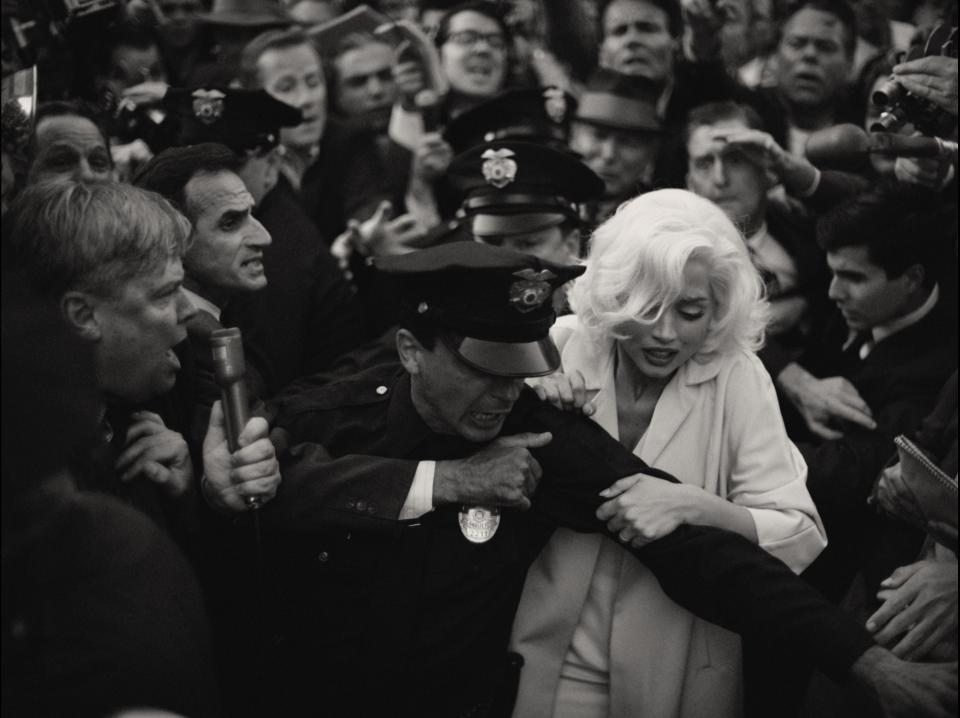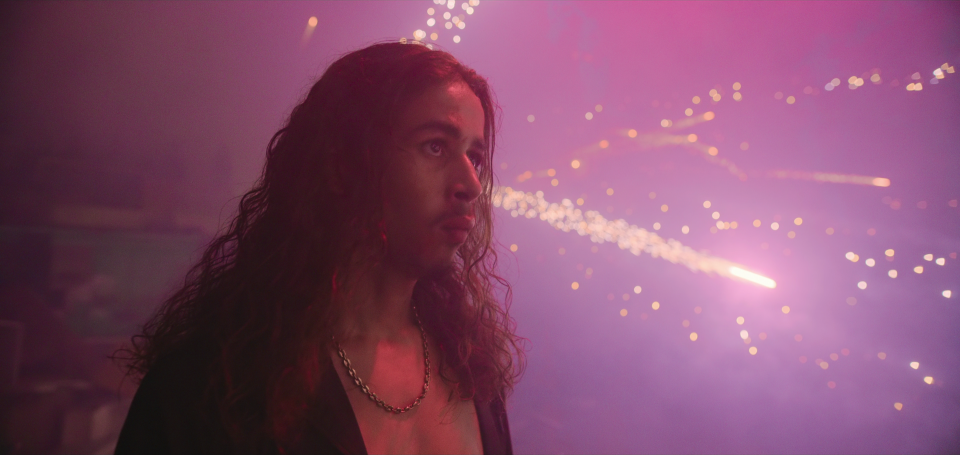With 'Blonde' and 'Athena,' Netflix outdoes its usual fare
- Oops!Something went wrong.Please try again later.
Last weekend, you were at Roots N Blues. I was at home with an infant watching Netflix.
Normally, I have nothing good to say about the streaming behemoth with bloated budgets, undisciplined filmmaking, and algorithms set for the lowest common denominator.
However, two recent flicks stand out as exceptional for any venue. These films are not “fun” to watch, but they are powerful and artistically amazing in their own unique ways.
'Blonde' questions how we look at Marilyn Monroe
The most controversial of the pair is Andrew Dominik’s “Blonde.” Describing the film as a fictionalized account of the life and death of Marilyn Monroe doesn’t quite capture its essence.

The film — based on Joyce Carol Oates’ novel — is not a biopic, nor does it pretend its details are factual. It’s more of an artistic abstraction of the tragedy of Marilyn Monroe’s existence. The substance is bleak, violent, unrelenting.
Critical that the center of the film is so ably supported by Ana de Armas, who captures not only the icon’s look and voice but her inherent innocence. An innocence slowly and systematically destroyed by the film industry and culture writ large.
More:'Moonage Daydream' presents David Bowie as an otherworldly rock icon
A young girl raised in a loveless home by a mentally-ill mother (Julianne Nicholson), young Norma Jeane believes fame is her fate and subjects herself to leering eyes and casting couches to make it so. Movie roles and notoriety follow with little regard to a woman in clear pain. The pain itself seems baked into a process of exploitation, sexual violence and moral coercion that meets her at every turn of her career.
I am not painting a pretty picture of “Blonde.” It’s a tough watch. Yet Dominik films it with an experimental flair, bouncing between color and black-and-white as well as varying film stocks and aspect ratios. Dominik creates a beautiful collage that provides space between the audience and the horrors portrayed in the film.
This style also is an indictment of a culture that views Monroe not as a person, but as a commodity. At perhaps the most disturbing moment of the film (the one that earns “Blonde” its NC-17 rating), the camera reveals the action taking place on a movie screen in front of a packed house.
Monroe suffered not for art but for our voyeuristic entertainment. “Am I a piece of meat?” she asks rhetorically to some high-powered handlers at one point. Subtle, it’s not. But Dominik doesn’t specialize in light touches. He’s an Aussie with a particular fascination for what makes America’s dark heart tick. “Blonde” offers a brutal assessment of our desire for sex and spectacle at any cost.
In an already-crowded field for best actress, de Armas deserves to be in contention for keeping Monroe’s humanity in perspective. I imagine the critical uproar over the film’s handling of abortion will scare off awards consideration. Truly, a shame that a film is lambasted for portraying a complicated subject with complicated terms. But “Blonde” deserves your attention.
'Athena' masterfully confronts today's big issues
“Athena” is a film I doubt you’ve even heard of. But seek it out and I promise you won’t forget it.
Romain Gavras, better known for his music video work, creates a kinetic essay on civil unrest, police brutality and class resentment. With many of our great artists hiding in the past with retrospective work (see Andrew Dominik as an example), Gavras confronts the big issues of our time and does so with a master’s touch.

The opening is a doozy. A press conference convenes in a French suburb to talk about the shooting of a young boy by a police officer. A disturbance breaks out in the back. Followed by a riot that migrates to a housing unit being taken over by protestors. All of this is shown in an 11-minute continuous shot. I’ve read plenty of articles describing how this opening was captured and how it was magically edited. It’s incredibly skillful.
Most of “Athena” is filmed in long, sustained moments like this. Very unusual for depicting action. But Gavras wants our eyes to stay focused on the participants. The lack of cuts creates a purity to the depiction and allows the audience to connect better.
Characters are complicated with competing motivations. The situation that set up this unrest might not be as it seems. We learn, slowly, how the community of Athena has become such a tinderbox of social dysfunction. The police and protestors are given a more nuanced portrayal than most other recent depictions.
More:Roots N Blues magic: 9 memorable moments from this year's festival
But the medicine for modem ills goes down smoother because Gavras has made a technically incredible film. He follows in the footsteps of his politically-minded filmmaker father Costa-Gavras very well.
Netflix has warned they are going to spend less money chasing awards, which means less money supporting films like “Blonde” and “Athena.” Be sure to check them out and let them know there’s an audience for smart, challenging films on their platform. Vote with your remote, folks.
In real life, James Owen is a lawyer and executive director of energy policy group Renew Missouri. He created/wrote for Filmsnobs.com from 2001-2007 before an extended stint as an on-air film critic for KY3, the NBC affiliate in Springfield. He was named a Top 20 Artist under the Age of 30 by The Kansas City Star when he was much younger than he is now.
This article originally appeared on Columbia Daily Tribune: How 'Blonde' and 'Athena' rise above the Netflix norm

